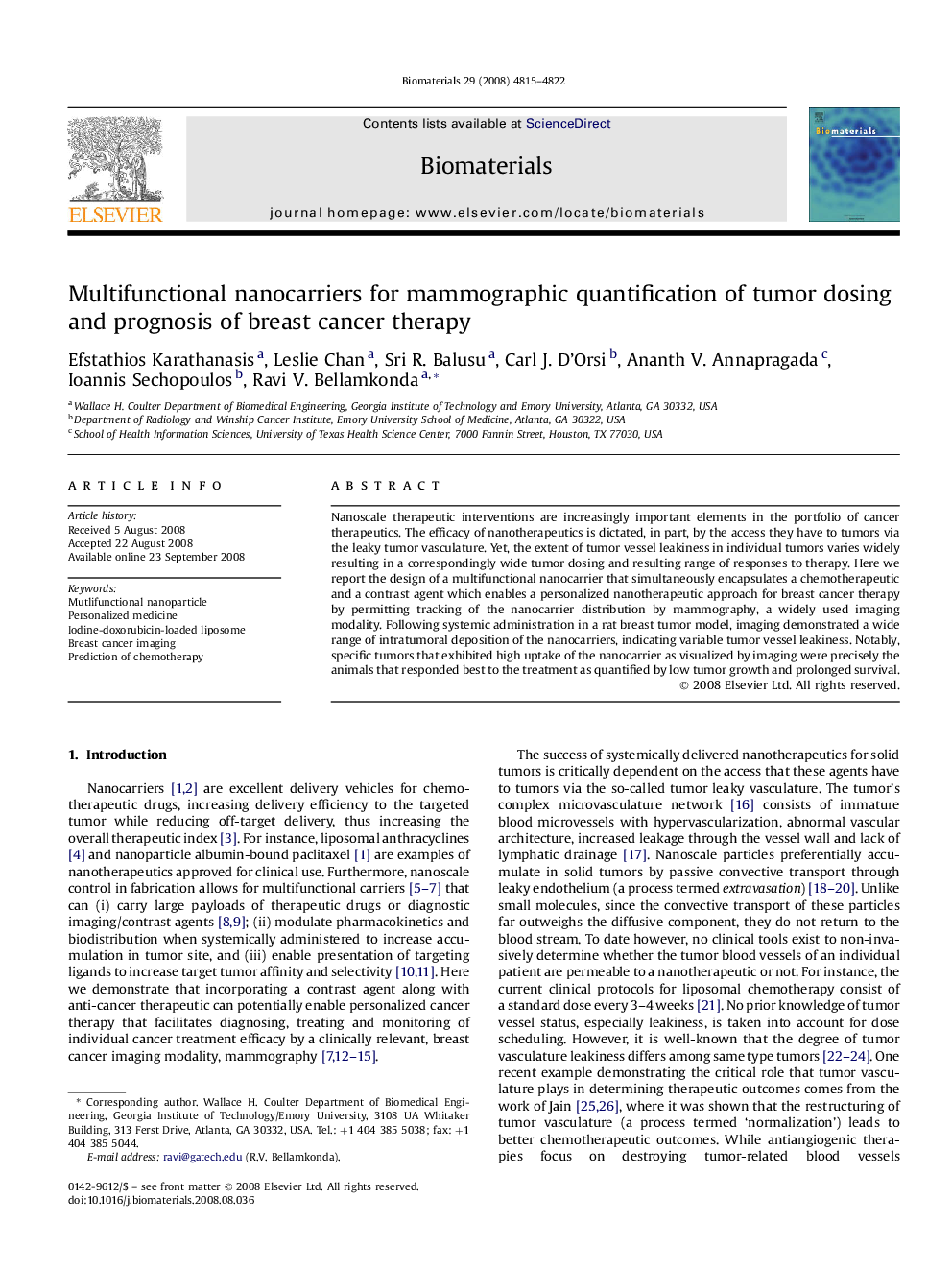| Article ID | Journal | Published Year | Pages | File Type |
|---|---|---|---|---|
| 9073 | Biomaterials | 2008 | 8 Pages |
Nanoscale therapeutic interventions are increasingly important elements in the portfolio of cancer therapeutics. The efficacy of nanotherapeutics is dictated, in part, by the access they have to tumors via the leaky tumor vasculature. Yet, the extent of tumor vessel leakiness in individual tumors varies widely resulting in a correspondingly wide tumor dosing and resulting range of responses to therapy. Here we report the design of a multifunctional nanocarrier that simultaneously encapsulates a chemotherapeutic and a contrast agent which enables a personalized nanotherapeutic approach for breast cancer therapy by permitting tracking of the nanocarrier distribution by mammography, a widely used imaging modality. Following systemic administration in a rat breast tumor model, imaging demonstrated a wide range of intratumoral deposition of the nanocarriers, indicating variable tumor vessel leakiness. Notably, specific tumors that exhibited high uptake of the nanocarrier as visualized by imaging were precisely the animals that responded best to the treatment as quantified by low tumor growth and prolonged survival.
